The Rise of Nationalism in Europe
Class-10-CBSE-NCERT-Social Science-History-Chapter-1
Exercise + Intext Solutions
-Exercise-
Write in brief :
Question 1. Write a note on:
(a) Guiseppe Mazzini
- Giuseppe Mazzini He was an Italian revolutionary, who was born in Genoa in 1807.
- He was sent into exile at the age of 24 in 1831 for attempting a revolution in Liguria. He founded underground societies named 'Young Italy' in Marseilles and 'Young Europe' in Berne whose members were like minded young men from Poland, France, Italy and the German states.
- He believed that God had intended notions to be the natural units of mankind.
- He opposed monarchy and supported the vision of democratic Republic.
- Following his ideas and on the model of his secret societies, more such societies were set up in Germany, France, Switzerland and Poland.
- Austrian Chancellor Duke Matternich once described him as 'the most dangerous enemy of our social order'.
(b) Count Camillo de Cavour
- Count Camillo de Cavour was the Chief Minister of Sardinia-Piedmont.
- He was neither a democratic nor a revolutionary. But he led the movement to unify the regions of Italy.
- Through tact and diplomacy, he entered into an alliance with France and succeeded in defeating Austrian forces in 1859 and thereby freed the Northern part of Italy from the Austrian Habsburg.
(c) The Greek war of independence
- This was a successful war of independence waged by Greek revolutionaries between 1821 and 1829 against the Ottoman Empire.
- The Greeks were supported by the West European countries, while poets and artists hailed Greece as the cradle of European civilisation.
- Finally, the Treaty of Constantinople of 1832 recognised Greece as an independent nation.
(d) Frankfurt parliament
- Frankfurt Parliament : It is the name of the German National Assembly, founded during the Revolution of 1848 that tried to unite Germany in a democratic way. The assembly was attended by 831 deputies.
- The members had drafted the Constitution for a new German nation. The new Constituion was rejected by Friedrich Wilhelm IV, the king of Prussia. Though the Frankfurt Parliament failed to unite Germany, it had consequences on Germany.
- The Parliament also faced strong opposition from the aristocracy and military as it was dominated by the middle-class who resisted the demands of workers and artisans. As result of this, the middle-class lost their mass support. Ultimately, the monarchy and military combined together with the aristocracy and won over the liberal nationalist middle-class.
- This forced the assembly to disband. Therefore, the Frankfurt Parliament is famous in history as a failure of liberalism and a victory of the monarchy.
(e) The role of women in nationalist struggles
- A large number of women had participated in liberal and national movements in European countries.
- They had formed their own political association, started newspapers and taken part in political meetings and demonstrations.
- Universal male suffrage was adopted in the country and the women were hoping for the voting right.
- However when the Frankfurt Parliament was convened in Church of St Paul, women were admitted only as observers to stand in the visiter's gallery.
Question 2. What steps did the French revolutionaries take to create a sense of collective identity among the French people?
The French revolutionaries took the following steps to create a sense of collective identity among the French people
- They introduced the ideas of la patrie (the fatherland) and le citoyen (the citizen), emphasising the concept of a united community enjoying equal rights under a Constitution.
- They chose a new French tlag, the tricolour, to replace the royal standard.
- The Estates General was elected by the body of active citizens and renamed the National Assembly.
- In the name of the nation, new hymns were composed, oaths taken and martyrs commemorated.
- They established a centralised administrative system, which formulated uniform laws for all citizens.
- They adopted a uniform system of weights and measures.
- All internal custom duties were abolished.
- They promoted the French language, as spoken and written in Paris and discouraged regional dialects.
- They declared that it was the mission and destiny of the French nation to liberate people of Europe from despotism. It is meant that they would help other people of Europe to become nation-states like them.
Question 3. Who were Marianne and Germania? What was the importance of the way in which they were portrayed?
- Marianne and Germania were respective female allegories for the French and the German nation. They stood as personifications of ideals like 'liberty' and 'the republic'.
- The importance of the way in which they were portrayed lay in the fact that the public could identify with their symbolic meaning, and this would instill a sense of national unity in them.
- In France, Marianne's characteristics were drawn from those of Liberty and the Republic-the red cap, the tricolour, the cockade. Statues of Marianne were erected in public squares to remind the public of national symbol of unity. Germania wears a crown of oak leaves which stands for heroism.
Question 4. Briefly trace the process of German unification.
The Frankfurt Parliament, convened on May 18, 1848, marked the first significant step towards German state unification, led by Prussian Chief Minister Otto von Bismarck, with the assistance of the Prussian Army and bureaucracy.
The building process of Germany after 1848 include the following events
- The liberal initiatives of nation building were repressed by the monarchy and big landlords of Prussia. From then on, Prussia took the initiative to unify Germany,
- There were widespread nationalist feelings among middle-class Germans, who in 1848, tried to unite the different regions of the German confederation into a Nation-state.
- Bismarck was convinced that the unification of Germany could be only achieved by the princes, not by the common people. He wanted to achieve his aim by merging Prussia into Germany. In 1867, Bismarck became the Chancellor of the North Confederation.
- Bismarck's main objective was to unify Germany and was accomplished by three wars with Austria, Denmark and France which were fought in a brief period of seven years. These wars were ended with the victory of Prussia which helped in completing the process of German unification.
- On 18th January, 1871, in the Royal Palace of Versailles, the king of Prussia, Kaiser William-I was crowned as the German Emperor. It symbolised the birth of a United Germany.
Question 5. What changes did Napoleon introduce to make the administrative system more efficient in the territories ruled by him?
Napoleon introduced the following changes to make the administrative system more efficient in the areas ruled by him
- He established the Civil Code of 1804, also known as the Napoleonic Code. This did away with all privileges based on birth. It established equality before law and secured the right to property.
- He simplified administrative divisions.
- He abolished the feudal system and freed peasants from serfdom and manorial dues.
- In towns, guild systems were removed.
- Transport and communication systems were improved.
Due to the above measures, peasants, artisans, businessmen and workers enjoyed a new found freedom.
Businessmen and small-scale producers realised that uniform laws, a common currency and standardized weights and measures would facilitate movement and exchange of goods between regions.
Discuss :
Question 1. Explain what is meant by the 1848 revolution of the liberals. What were the political, social and economic ideas supported by the liberals?
By the 1848 Revolution of the Liberals, we mean, the revolution led by the educated middle classes of Europe. Events of February 1848, in France, brought about the abdication of the monarchy and a republic based on universal male franchise was formed.
The political, social and economic ideas supported by the liberals were clearly based on democratic ideals.
- Politically, they demanded constitutionalism with national unification-a nation-state with a written constitution and parliamentary administration.
- They wanted to rid society of its class-based partialities and birth rights.
- Serfdom and bonded labour had to be abolished, and economic equality had to be pursued as a national goal.
- The right to property was also significant in the liberals' concept of a nation based on political, social and economic freedom.
Question 2. Choose three examples to show the contribution of culture to the growth of nationalism in Europe.
Examples of contribution of culture to the growth of nationalism in Europe are
- The idea of a nation can be created through stories, poems and writings. Music too can help in expressing nationalist feelings or sentiments. Collecting and recording the different forms of folk culture was important for building a national conciousness. Being a part of the lives of the common people, folk culture enabled nationalist to carry the message of nationalism to a large and diverse For example, Karol Kurpinski celebrated the national struggle through his operas and music turning Folk dances like the Polonaise and Mazurka into nationalist symbol.
- Romanticism, a cultural movement which emerged in Europe, sought to develop a particular form of nationalist sentiments or national feelings. The main aim of Romantic artists was to create a sense of a shared collective heritage and a common cultural past.
- Language also played an important role in developing the national sentiments or nationalist feeling. For example, in Poland, language began to be used as a weapon of national resistance. The wide scale use of Polish language came to be seen as a symbol of struggle against national dominance.
Question 3. Through a focus on any two countries, explain how nations developed over the nineteenth century.
The development of the German and Italian nation states in the nineteenth century :
Political fragmentation: Till the middle of the nineteenth century, the present-day nations of Germany and Italy were fragmented into separate regions and kingdoms ruled by different princely houses.
Revolutionary uprisings: Nineteenth-century Europe was characterised by both popular uprisings of the masses and revolutions led by the educated, liberal middle classes. The middle classes belonging to the different German regions came together to form an all-German National Assembly in 1848. However, on facing opposition from the aristocracy and military, and on losing its mass support base, it was forced to disband.
In the Italian region, during the 1830s, revolutionaries like Giuseppe Mazzini sought to establish a unitary Italian Republic. However, the revolutionary uprisings of 1831 and 1848 failed to unite Italy.
Unification with the help of the army: After the failure of the revolutions, the process of German and Italian unification was continued by the aristocracy and the army. Germany was united by the Prussian chief minister Otto von Bismarck with the
help of the Prussian army and bureaucracy. The German empire was proclaimed in 1871.
The Italian state of Sardinia-Piedmont played a role similar to that played by Prussia. Count Camillo de Cavour (the Chief Minister) led the movement to unite the separate states of nineteenth-century Italy with the help of the army and an alliance with France. The regions annexed by Giuseppe Garibaldi and his Red Shirts joined with the northern regions to form a united Italy. The italian nation was proclaimed in 1861. The papal states joined in 1870.
Question 4. How was the history of nationalism in Britain unlike the rest of Europe?
In Britain the development of nationalism followed a different pattern from the rest of Europe.
- Before the 18th century, different ethnic groups of people were there in the British Isles, such as English, Welsh, Scot and Irish. Each of these ethnic groups had its own cultural and political traditions. The British Parliament became the chief instrument to curb the power of the monarchy in 1688 through a bloodless revolution.
- The Act of Union (1707) between England and Scotland formed the United Kingdom of Great Britain. With the advent of English power, the English removed the cultural, political institutions of Scotland forcefully and the Scots were banned from speaking the Gaelic language and put on their national dress.
- The English with the help of the protestants suppressed the Catholics of Ireland and forcibly incorporated United Ireland with the United Kingdom in 1801. Scotland and Ireland became the subordinate partners of the United Kingdom. The symbols of the New Britain, the National Flag (Union Jack), the National Anthem (God save our Noble King) and the English language were actively promoted.
Question 5. Why did nationalist tensions emerge in the Balkans?
- Nationalist tensions in the Balkans arose due to romantic nationalism and the disintegration of the Ottoman Empire.
- Slavic communities sought independent rule, jealousy, and territorial expansion.
- Imperial power over the Balkans, including Russia, Germany, England, and Austro-Hungary, worsened the situation.
- These conflicts ultimately led to the First World War in 1914, resulting in territorial disputes and territorial disputes among the Balkan states.
-Intext Activity & Discuss-
Intext Activity :
Question 1 : In what way do you think this print (Fig. 1) depicts a utopian vision?
Utopian vision means depicting something idealistic.
The French artist Frederic Sorrieu was visualising a dream of a world made up of nations (all of them did not exit as nations at the time when these prints were made). He had showed the German people with a common flag, although actually they were a number of different states at that time. So, it is an idealistic or Utopian vision. On the Earth in foreground of the image lie the shattered remains of the symbols of absolutist institutions.
Question 2 : Plot on a map of Europe the changes drawn up by the Vienna Congress.
Student should be done by self
Question 3 : Imagine you are a weaver who saw the events as they unfolded. Write a report on what you saw.
Student should be done by self
Question 4 : Describe the caricature. How does it represent the relationship between Bismarck and the elected deputies of Parliament? What interpretation of democratic processes is the artist trying to convey?
- The caricature depicts Bismarck, Chancellor of Germany as holding a whip (signifying that he is a ruthless man ruling with an iron hand) while leading the parliament.
- The deputies who were elected are afraid of him and so are hiding under their tables.
- The caricature depicted the dominance of Bismarck over the deputies and how he despised liberalism and parliamentary assemblies.
- The artist is trying to convey the democratic system in a funny way in which democracy exists only for namesake. In reality it is one man's i.e. Bismarck's autocracy that exists in Parliament.
Question 5 : Look at Fig. 14(a). Do you think that the people living in any of these regions thought of themselves as Italians?
(For Fig. 14 refer NCERT Text Book)
No, they did not think of themselves as Italians.
Before unification, most people in the Italian peninsula did not strongly identify as "Italians"
Question 6 : Examine Fig. 14(b). Which was the first region to become a part of unified Italy? Which was the last region to join? In which year did the largest number of states join?
(For Fig. 14 refer NCERT Text Book)
During the middle of the 19th century, Italy was divided into seven states, out of which only one state, Sardinia-Piedmont was ruled by an Italian Princely House.
The Kingdom of Sardinia was the core around which Italy was unified.
Lombardy was the first region (Year: 1859) acquired by the Kingdom of Sardinia after the Second Italian War of Independence against Austria.
The last major territory to join was the Papal States (Year: 1870), captured by Italian troops during the Capture of Rome, ending Papal rule.
Year 1860 was the most pivotal year in the unification process. The following regions joined:
- Tuscany
- Emilia-Romagna
- Parma
- Modena
- The Kingdom of the Two Sicilies
- Marche
- Umbria
Many of these regions were incorporated after plebiscites (popular votes) and military campaigns, notably Garibaldi’s Expedition of the Thousand.
Question 7 : The artist has portrayed Garibaldi as holding on to the base of the boot, so that the King of Sardinia-Piedmont can enter it from the top. Look at the map of Italy once more. What statement is this caricature making?
Question 8 : With the help of the chart in Box 3, identify the attributes of Veit’s Germania and interpret the symbolic meaning of the painting. In an earlier allegorical rendering of 1836, Veit had portrayed the Kaiser’s crown at the place where he has now located the broken chain. Explain the significance of this change.
(For Fig. 17 refer NCERT Text Book)
The symbolic meaning of the painting is that the German nation has emerged. The female figure of Germania is an allegory of the German nation. All the attributes of the German nation can be seen in the painting as given in the chart. The replacement of the Kaiser's crown with the broken chain signifies that the German nation is now free from autocratic monarchical rule.
Question 9 : Describe what you see in below Fig. What historical events could Hübner be referring to in this allegorical vision of the nation?
The painter depicted Germania as a fallen woman with the crown and stick thrown aside because German people's hopes to be united under one monarch (King Friedrich Wilhelm IV) were not fulfil as he rejected their demand in 1848.
The artist, Julius Hubner, depicted Germania in a miserable state due to this rejection by the king. It symbolised the loss of hope. The crown and stick are symbols of the monarchy, which have been cast aside.
Question 10 : Look once more at Fig. 10. Imagine you were a citizen of Frankfurt in March 1848 and were present during the proceedings of the parliament. How would you (a) as a man seated in the hall of deputies, and (b) as a woman observing from the galleries, relate to the banner of Germania hanging from the ceiling?
(a) As a man seated in the hall of deputies, I would relate positively to the banner of Germania, as I would feel all that it symbolised was coming true.
(b) As a woman observing from the galleries, I would consider the banner to depict the truth only partially. This is because women had participated with men equally in the struggle for constitutionalism with national unification, but they were denied suffrage rights during elections to the National Assembly. Women were only admitted to the assembly as passive citizens and observers.
Intext Discuss :
Question 1 : Summarise the attributes of a nation, as Renan understands them. Why, in his view, are nations important?
Ernest Renan’s understanding of a nation, as expressed in his 1882 lecture "What is a Nation?" (Qu'est-ce qu'une nation?), offers a nuanced and historically grounded view. Here's a summary of the attributes of a nation according to Renan, and why he believes nations are important:
Attributes of a Nation (According to Renan)
(i) A Shared Past (Historical Legacy):
- A nation is built upon a common history, especially one shaped by shared suffering and achievement.
- The memory of collective experiences, such as struggles, victories, and sacrifices, forms the emotional foundation of national identity.
(ii) A Present Will (Consent and Desire to Live Together):
- A nation exists through the daily affirmation of its people—a “daily plebiscite.”
- More than common language, race, or religion, a nation is based on the voluntary and ongoing commitment of individuals to be part of a collective whole.
(iii) Forgetting as Essential:
- Renan controversially asserts that forgetting certain aspects of history—especially internal conflicts and crimes—is necessary for national unity.
- Selective historical memory allows diverse groups to form a cohesive identity.
(iv) Not Based on Race, Language, or Religion:
- He rejects the idea that race (ethnicity), language, or religion are sufficient or necessary to define a nation.
- Nations are spiritual and psychological constructs, not purely biological or linguistic ones.
Why Nations Are Important (Renan’s View) :
- Nations provide a framework for individual freedoms and democratic participation.
- National identity fosters a sense of belonging and shared responsibility.
- Nations are the means by which the achievements of past generations are preserved and built upon.
- They serve as vessels of civilization and culture over time.
- National unity allows for collective action, defense, and resilience.
- The sense of shared fate binds people together in mutual support.
Renan views a nation not as a biological or geographical fact, but as a spiritual and emotional bond rooted in shared history and the present will to live together. Nations are important to him because they sustain liberty, cultural continuity, and collective solidarity in a meaningful way
Question 2 : Describe the political ends that List hopes to achieve through economic measures.
- Friedrich List, a 19th-century German economist, argued that economic policy should serve national political goals, particularly the strength and independence of the nation-state. List believed that free trade benefits strong, industrialized nations while weakening less developed ones.
- List’s ideas were hugely influential in shaping the economic strategies of Germany, and other nations that sought to industrialize and assert themselves politically on the world stage.
Question 3 : What is the caricaturist trying to depict?
The caricature depicts Bismarck, Chancellor of Germany as holding a whip (signifying that he is a ruthless man ruling with an iron hand) while leading the parliament.
The artist is trying to convey the democratic system in a funny way in which democracy exists only for namesake. In reality it is one man's i.e. Bismarck's autocracy that exists in Parliament.
Question 4 : Discuss the importance of language and popular traditions in the creation of national identity.
- Language and popular traditions play a central role in the creation of national identity because they act as powerful symbols of shared history, culture, and belonging.
- National identity is not just a political or legal concept — it is also emotional and cultural, rooted in the feeling of being part of a larger “imagined community,”
- Culture played a crucial role in shaping the idea of a nation, with art, poetry, stories, and music expressing and shaping nationalist feelings.
- Folklore, such as folk songs, poetry, and dances, popularized the spirit of the nation. Focusing on local languages and gathering traditional stories allowed people who couldn't read to share modern nationalist ideas.
- Language also played a significant role in developing national sentiments, e.g. the Polish language was forced out of schools after Russian occupation. In 1831, a rebellion against Russian control was defeated, with Polish language being used by Polish clergies for religious instruction and as a weapon against Russian dominance.
Question 4 : Describe the cause of the Silesian weavers’ uprising. Comment on the viewpoint of the journalist.
- The cause of the 'Silesian Weavers' uprising was due to the cheating of the weavers by the contractors. In 1845, the weavers raised a revolt against the contractors as the contractors drastically reduced their payments.
- The viewpoint of the journalist Wilhelm Wolff for this uprising was - a large crowd of weavers reached the house of the contractor and demanded higher wages.
- They were not treated well, so a group of the crowd entered the contractor's house forcibly and destroyed the furniture, windowpanes and plundered it.
- The contractor fled with his family to a neighbouring village but did not get shelter. After 24 hours, he returned back with army and eleven weavers were shot dead.
- The viewpoint of the journalist was based against the weavers and in favour of the contractor. He did not understand the misery of the weavers properly.
Question 5 : Compare the positions on the question of women’s rights voiced by the three writers cited above. What do they reveal about liberal ideology?
The three voices quoted — Carl Welcker, Louise Otto-Peters, and an anonymous female reader — represent sharply contrasting perspectives on women’s rights within the 19th-century liberal movement. Their positions highlight a central contradiction in liberal ideology: the gap between its universal claims of liberty and equality and its selective application, particularly regarding gender.
These contrasting perspectives reveal a key tension within 19th-century liberalism:
- While liberal ideology was based on the ideals of freedom, equality, and reason, its application was often restricted to men.
- Some liberals (like Welcker) used "natural difference" arguments to justify excluding women, revealing internal limits in liberal thinking.
- Others (like Otto-Peters and the anonymous reader) used liberal principles themselves to demand consistency and expand rights to women, showing that liberalism could evolve under pressure.
Click on below links to get PDF from store
PDF : Class 10th-Social Science-History-Chapter-1-The Rise of Nationalism in Europe-Notes
PDF : Class 10th-Social Science-History-Chapter-1-The Rise of Nationalism in Europe-Solution
Main Page : NCERT-CBSE-Class-10-Social Science- – All chapters notes, solutions, videos, test, pdf.
Next Chapter : Chapter-2- Nationalism in India – Online Solutions
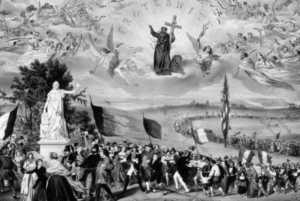
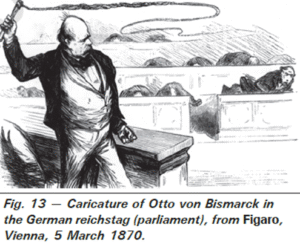
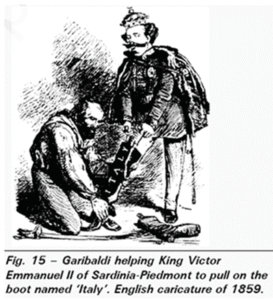
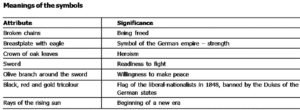
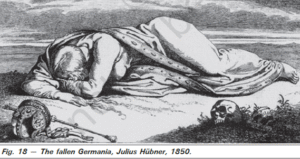
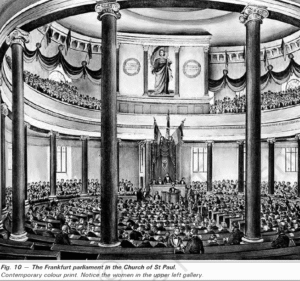
We reply to valid query.